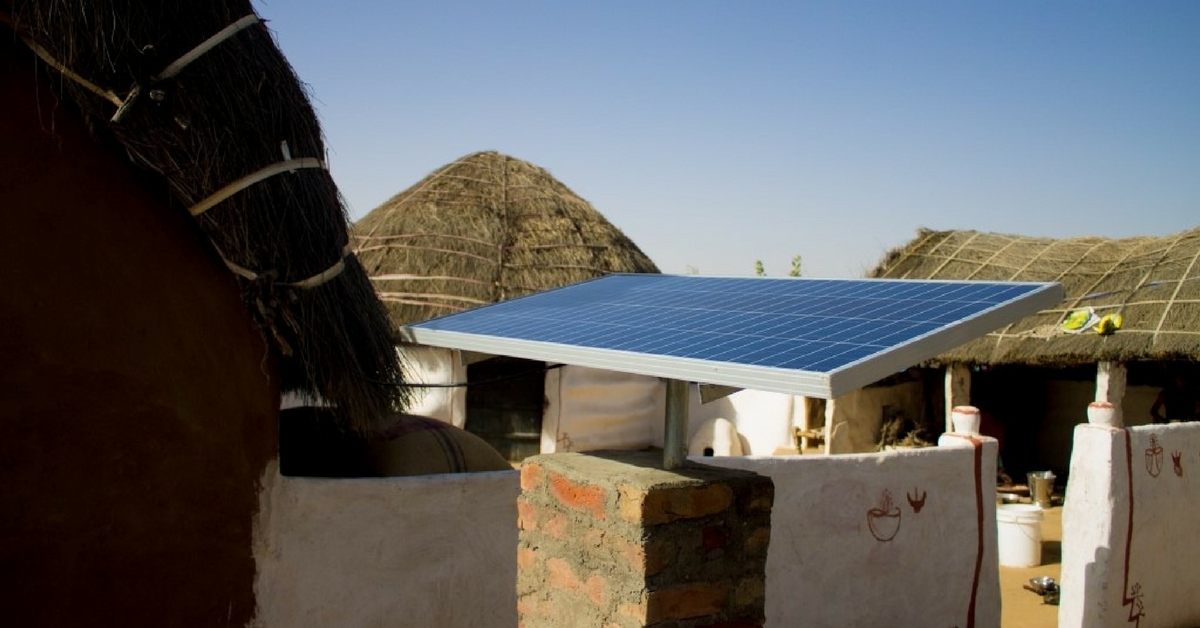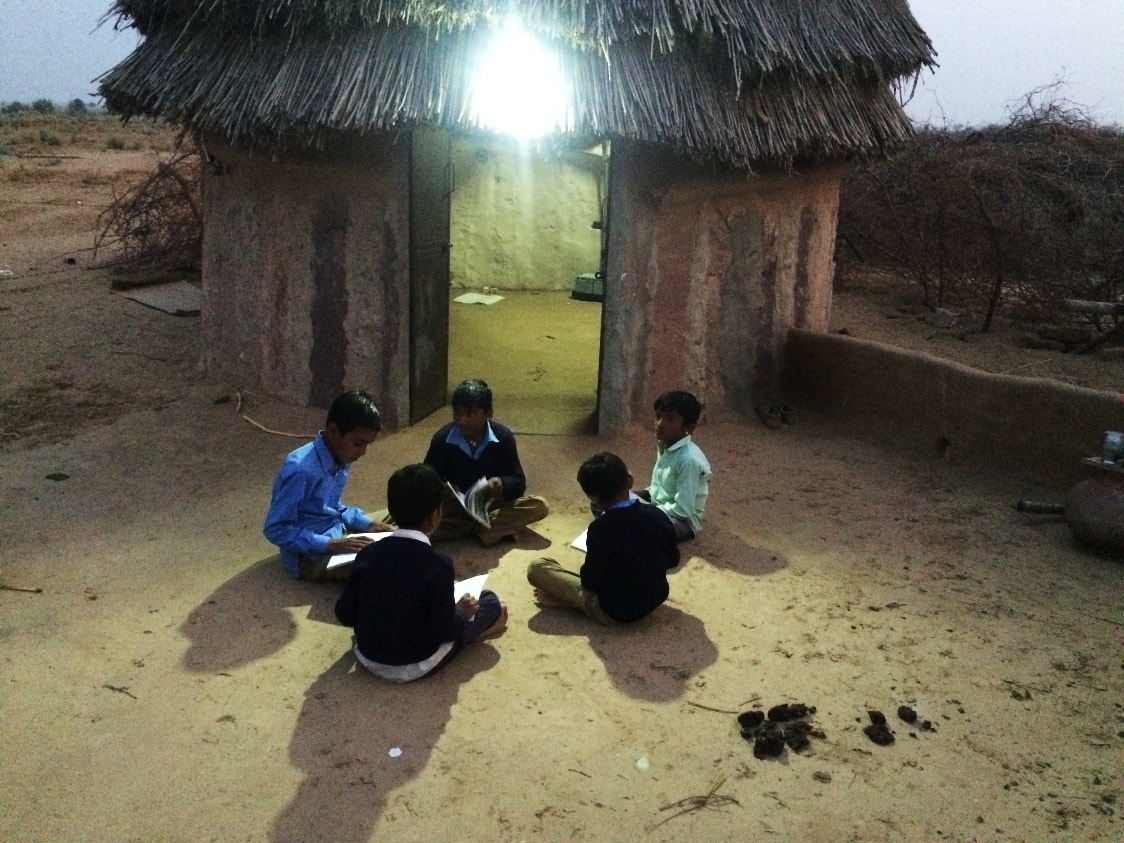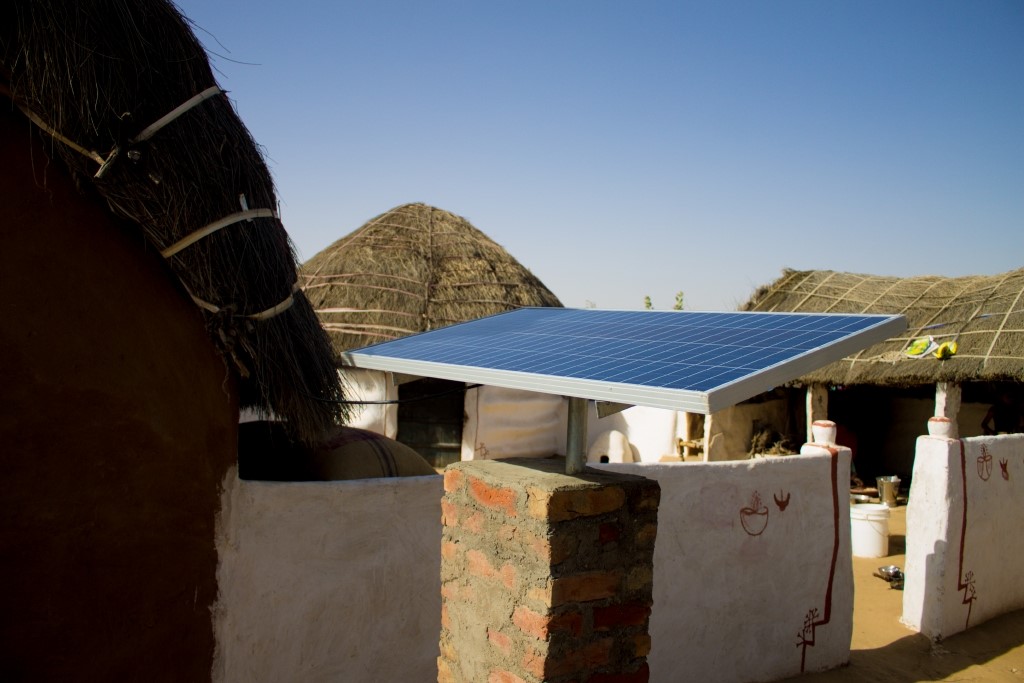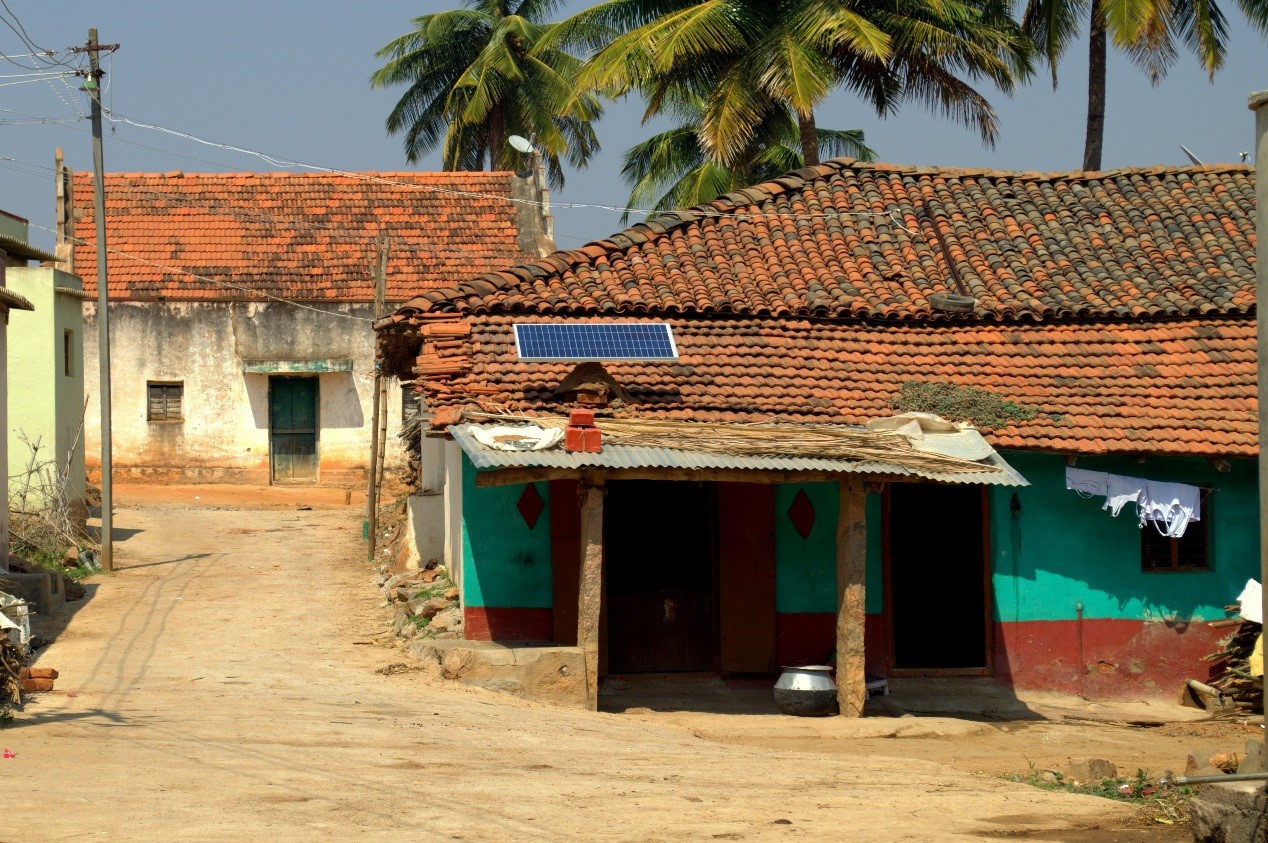TBI Blogs: How an IIT Madras Initiative Is Powering 9,000 Homes at a Fraction of Traditional Electricity Costs
Solar DC, a project spearheaded by IIT Madras, is touted to transform society the same way electricity did.

In today’s India, there is an interesting dichotomy. Urban dwellers tend to take electricity for granted despite chronic load shedding, while at the same time, for the approximately 300 million Indians living off-grid, mere access to power is more of a privilege. As such, uninterrupted, reliable power still remains a distant reality in many parts of the country.
In villages like Bhoomji ka Gaon in Rajasthan, or Belagavadi in Karnataka, life comes to a standstill after sunset. These villages, like many others in India, lack either access to electricity, or high-quality, round-the-clock supply of electricity. Without electricity, villagers generally struggle with their evening chores under the dim light of aged kerosene lamps. Even during the daytime, these people are denied the most basic conveniences of modern life, like fans to fight the oppressive heat and mosquitoes, charging mobile phones and laptops, and lights in dimly lit areas to ward off snakes and insects.
A quick visit to such areas re-iterates the fact that electricity is not only about powering the homes, but about quality of life. These villages are victims of social ills, including poor security, particularly in the night, poor health, poor education, and lack of productivity opportunities, brought about due to lack of access to energy services
In 2015, the Council for Energy, Environment and Water had conducted a study of villages in six Indian states. A vast majority of these villages reported having fewer than four hours of electricity per day. Nearly half of the households reported having a grid connection but with effectively no electricity. Chief among the reasons that were cited were poor reliability, quality, and affordability.
In many parts of the country, even middle-income households still find themselves held hostage to frequent power cuts that can last anywhere from a few hours a day to most of the day.
In an attempt to address this issue of energy poverty and make uninterrupted power accessible to all, the Solar DC team from the Indian Institute of Technology (IIT) Madras, spearheaded by Prof. Ashok Jhunjhunwala, in conjunction with industrial partners, began work on solar-powered direct-current (DC) micro-grids.
The idea is very simple. Have an internal distribution line with DC appliances running on DC power, and utilize solar panels and batteries which are inherently DC. Since this marries the energy-efficient DC technology with solar power solution, the size of the system falls drastically. This translates to energy and cost savings of about 50 % compared to conventional solar power solutions available today.
For homes not connected to the grid, a 125-watt micro-grid with a solar panel backed up by a small battery can supply all the electricity. For connected households, the micro-grid acts as a backup power supply to let lighting, fans, TV sets, and cellphone chargers continue operating even during brownouts.
Solar DC power generation is a disruptive concept which challenges the current business model of generation and distribution.
Solar DC Inverterless technology solution is the need of the hour, which proposes a new market architecture where the concepts of generating at point-of-use, minimal transmission costs, and storing electricity for later consumption are redefined and instigated.
The largest Solar DC Inverterless deployment to date involves 71 villages in Rajasthan, where the team has been working with the utility company Jodhpur Vidyut Vitaran Nigam Limited (JVVNL), the Rural Electrification Corporation, India, and the Ministry of Power to electrify 4,000 off-grid homes.
This project has proven to be a game-changer for JVVNL, as for the conventional power grid to reach these remote villages, it would require building substations and power lines, a difficult and economically unfeasible proposition given the uneven terrain, long distances, and occasional sere sandstorms. Details of many other Solar DC Inverterless installations could be found online.
A typical Solar DC Inverterless system comes with a 125-W solar panel, a specially designed 1-kWh lead-acid battery with an expected life span of 1,600 cycles (compared to about 800 cycles for a normal battery), and an Inverterless controller box. This would be enough to power a full-size DC fan, a dimmable LED tube light, an LED lightbulb, and a cellphone charger. The homeowner can add extra lights or a TV set, as long as the overall system sizing is done appropriately.
The entire system’s manufacture and installation costs a fraction of traditional grid electrification.
A grid-connected home where power is unreliable can benefit from having a separate DC line, which provides about 10 % of the usual household load during brownouts.
For villages like Bhoomji ka Gaon and Belagavadi, conventional electrification is many years away, at best. In the meantime, DC appliances will keep getting better. A wider range of products will come to market, including evaporative coolers, small DC refrigerators, and solar stoves. Solar panels, batteries, and other micro-grid components will continue to become cheaper and more efficient. In the end, the villagers may find that their off-grid systems providing all that they need.
These small interventions have gone ahead to prove that technology is definitely an enabler in transforming the quality of life. A modest level of access to electricity has shown to have positively impacted the lives of several thousands. They now enjoy comforts, conveniences, and security that they never thought they’d have. Technological breakthroughs can bring about change by making cities and villages livable, equitable, and sustainable.
IIT Madras has also been encouraging startups in the renewable energy and cleantech domain under the aegis of Prof. Bhaskar Ramamurthi and Prof. Ashok Jhunjhunwala.
Manufacturing of standard solar components is a small part of a larger emerging industry. Inverterless, application monitoring software, storage systems, domestic and commercial building energy management systems, and smart meters are some of the areas that startups like Cygni Energy, Chakra Networks, Swadha Energy, and Zazen Systems, among others, are working on.
Just as electricity transformed many industries roughly 100 years ago, Solar DC will also now change nearly every major industry. Better healthcare, transportation, entertainment, and manufacturing will enrich the lives of countless people.
Find out more about Solar DC systems and how you can get one of your own online.
Like this story? Or have something to share? Write to us: [email protected], or connect with us on Facebook and Twitter.
NEW: Click here to get positive news on WhatsApp!
This story made me
- 97
- 121
- 89
- 167
Tell Us More
We bring stories straight from the heart of India, to inspire millions and create a wave of impact. Our positive movement is growing bigger everyday, and we would love for you to join it.
Please contribute whatever you can, every little penny helps our team in bringing you more stories that support dreams and spread hope.























